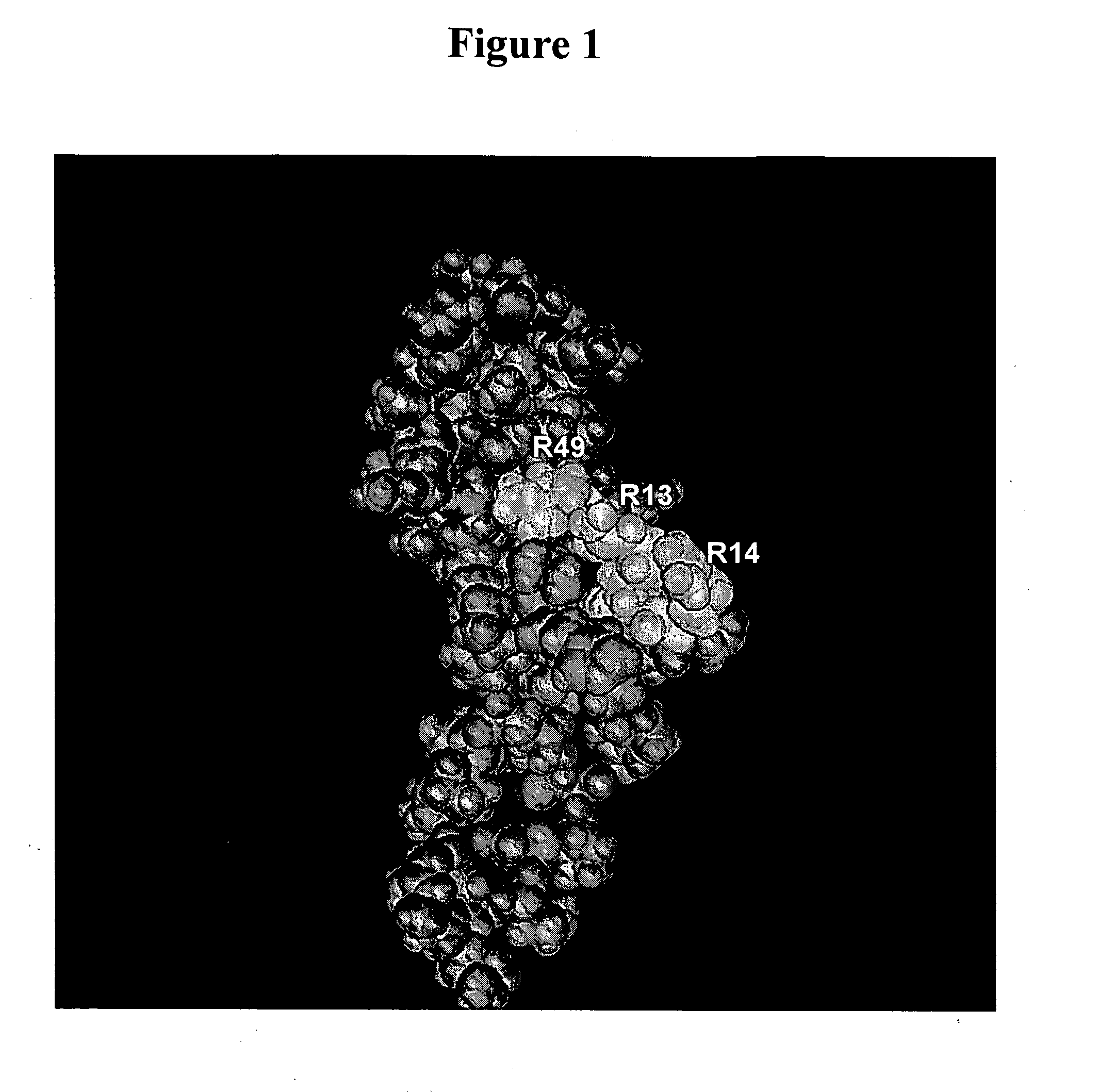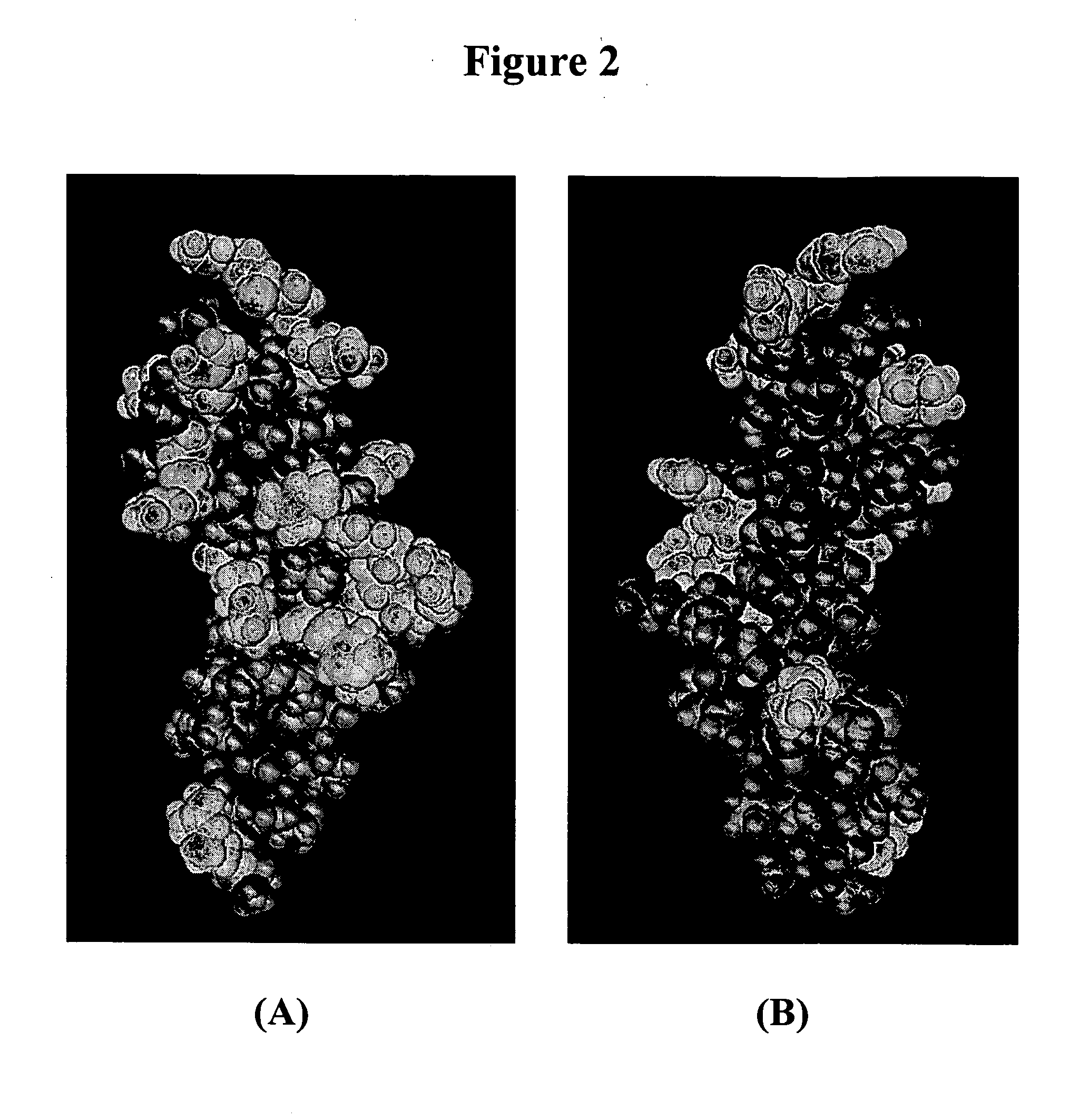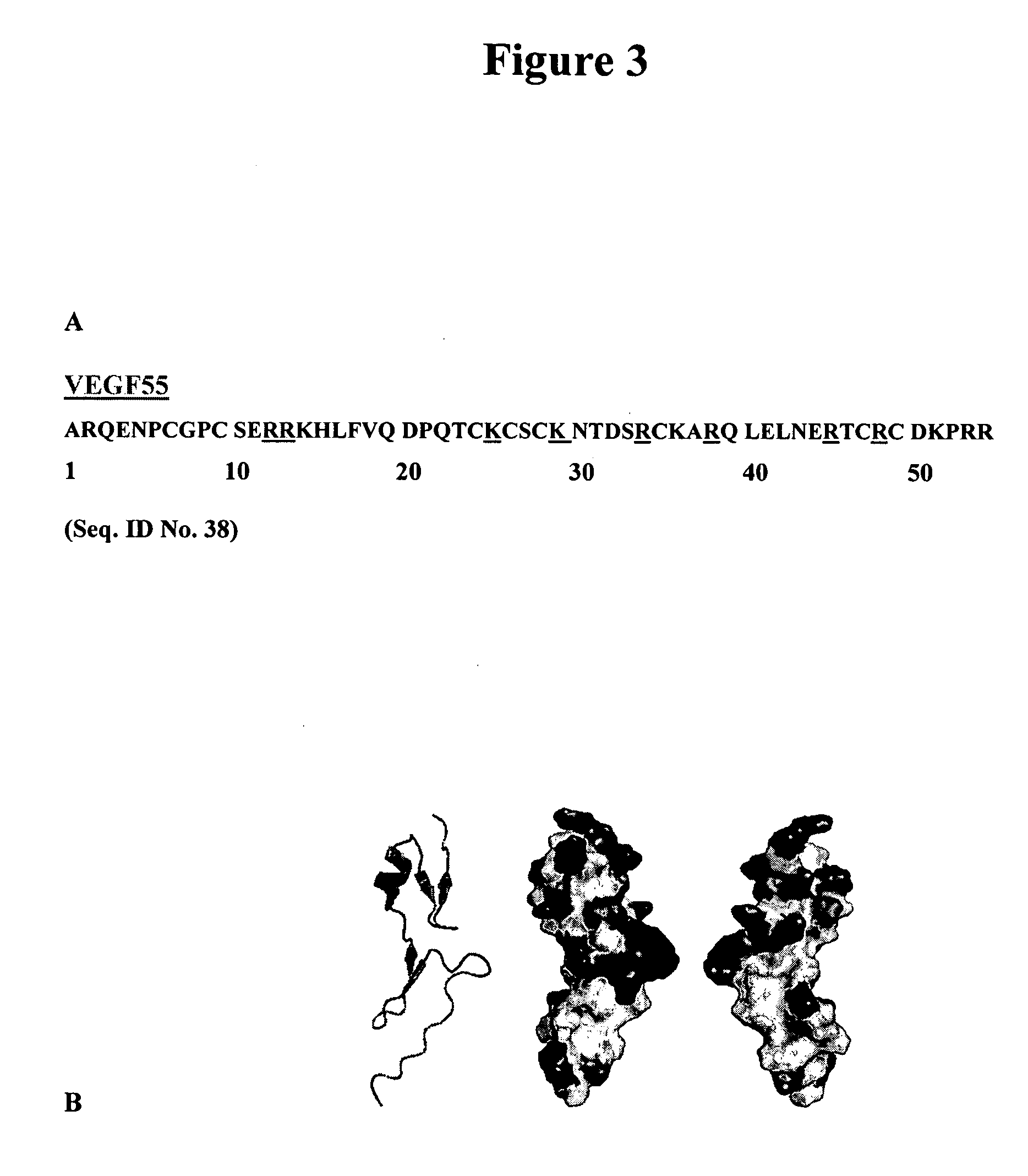VEGF variants
a growth factor and vascular endothelial technology, applied in the field of medicine, can solve the problems of inducible lymphangiogenesis, progressive motoneuron degeneration, and inability to induce lymphangiogenesis, and achieve the effects of reducing the risk of vegf, angiogenesis and leukocyte recruitment, and avoiding the formation of veg
- Summary
- Abstract
- Description
- Claims
- Application Information
AI Technical Summary
Benefits of technology
Problems solved by technology
Method used
Image
Examples
example 1
Site-Directed Mutagenesis
[0305] Alanine substitutions were introduced into exon 7 (Pro116-Cys160) of full-length VEGF164 by PCR using the QuikChange™ Multi Site-directed Mutagenesis Kit (Stratagene).
[0306] Oligonucleotide primers containing the desired mutation flanked by unmodified nucleotide sequence were synthesized and purified by HPLC and ethanol precipitation. They were designed to bind to adjacent sequences or to separate regions on the same strand of the template plasmid. Primers were usually 32-43 bp in length and were 5′-phosphorylated for better mutagenesis efficiency. They had a minimum GC content of 40% with a melting temperature (Tm) of ≧75° C. and terminate in one or more C or G bases at the 3′-end. Reactions were carried out in the appropriate buffer in 25 μL using 100 ng of each primer, 50 ng double-stranded DNA template, 1 μL dNTP mix, and 1 μL of Pfu Turbo DNA polymerase enzyme blend (Stratagene).
[0307] The following PCR conditions were used:
Segment 1 1 cycl...
example 2
Heparin / VEGF Protein Filter Binding Assay
Purpose:
[0317] To determine the binding specificity of heparin towards VEGF164 and mutant VEGF164 variants.
Reagents:
[0318] VEGF164 and VEGF164 heparin-binding domain mutant variants (produced by using the Pichia recombinant protein production system from Invitrogen Inc., at Eyetech Research Center, Lexington, Mass.) [0319] [3H]-heparin (Cat # NET476, Perkin Elmer, Inc.) [0320] Scintillation Fluid (Perkin Elmer, Inc.) [0321] TRIS base, sodium chloride (NaCl) and bovine serum albumin (BSA) (Sigma, Inc.)
Materials: [0322] Non-Stick 1.5 mL Microfuge Tube (Ambion, Inc.) [0323] Hybridization Oven (Thermo Hybaid, Inc.) [0324] Microbeta TriLux Scintillation Counter (Perkin Elmer, Inc.) [0325] Millipore Vacuum Manifold and HATF nitrocellular Filter (2.5 cm diameter, 0.45 micron pore size) (Millipore, Inc., Cat# HATF02500) [0326] Pipetman P20, P200, and P1000 (Rainin Instrument Co, Inc.) [0327] Pipet-Aid (Drummond Scientific Co., Inc.) [0328] S...
example 3
In Vitro Receptor Binding Assays (Competition Binding Assays) to assess VEGF binding to Neuropilin-1, VEGFR1 (Fit-1), and VEGFR2 (Flk-1)
Purpose:
[0336] To determine the efficacy of VEGF164 and VEGF164 mutant variants (IC50) in inhibiting the binding of 125I-VEGF165 to the three high-affinity cell surface receptors: VEGFR-1, VEGFR-2, and neuropilin-1 in vitro.
Reagents: [0337] Anti-Human IgG, Fc Fragment-Specific Antibody (CALBIOCHEM, Inc.) Human VEGFR-1 / Fc Chimera, Human VEGFR-2 / Fc Chimera, Human Neuropilin-1 / Fc (R&D Systems, Inc.) [0338] Bovine Serum Albumin (BSA) and Tween 20 (Sigma, Inc.) [0339] Phosphate Buffered Saline (PBS) (Gibco Life Sciences, Inc.) [0340] Super Block Blocking Buffer in PBS (PIERCE, Inc.) [0341]125VEGF165 (Amersham Biosciences, Inc.)
Materials: [0342] Isoplate High-Binding (HB) 96-well (Cat# 1450-518, Perkin Elmer, Inc.) [0343] Non-Stick 1.5 mL Microfuge Tube (Ambion, Inc.) [0344] Hybridization Oven (Thermo Hybaid, Inc.) [0345] Microbeta TriLux Scintill...
PUM
| Property | Measurement | Unit |
|---|---|---|
| Fraction | aaaaa | aaaaa |
| Temperature | aaaaa | aaaaa |
| Temperature | aaaaa | aaaaa |
Abstract
Description
Claims
Application Information
 Login to View More
Login to View More - R&D
- Intellectual Property
- Life Sciences
- Materials
- Tech Scout
- Unparalleled Data Quality
- Higher Quality Content
- 60% Fewer Hallucinations
Browse by: Latest US Patents, China's latest patents, Technical Efficacy Thesaurus, Application Domain, Technology Topic, Popular Technical Reports.
© 2025 PatSnap. All rights reserved.Legal|Privacy policy|Modern Slavery Act Transparency Statement|Sitemap|About US| Contact US: help@patsnap.com



